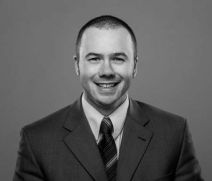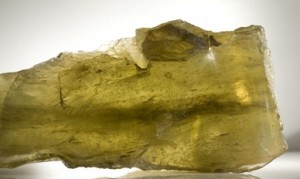These days it’s all about artificial intelligence (AI) or robots and often, it’s both. They’re everywhere and they will take everyone’s jobs, or not, depending on how you view them. Today, I’ve got two artificial intelligence items, the first of which may provoke writers’ anxieties.
Fairytales
The Princess and the Fox is a new fairytale by the Brothers Grimm or rather, their artificially intelligent surrogate according to an April 18, 2018 article on the British Broadcasting Corporation’s online news website,
It was recently reported that the meditation app Calm had published a “new” fairytale by the Brothers Grimm.
However, The Princess and the Fox was written not by the brothers, who died over 150 years ago, but by humans using an artificial intelligence (AI) tool.
It’s the first fairy tale written by an AI, claims Calm, and is the result of a collaboration with Botnik Studios – a community of writers, artists and developers. Calm says the technique could be referred to as “literary cloning”.
Botnik employees used a predictive-text program to generate words and phrases that might be found in the original Grimm fairytales. Human writers then pieced together sentences to form “the rough shape of a story”, according to Jamie Brew, chief executive of Botnik.
The full version is available to paying customers of Calm, but here’s a short extract:
“Once upon a time, there was a golden horse with a golden saddle and a beautiful purple flower in its hair. The horse would carry the flower to the village where the princess danced for joy at the thought of looking so beautiful and good.
…
Advertising for a meditation app?
Of course, it’s advertising and it’s ‘smart’ advertising (wordplay intended). Here’s a preview/trailer,
Blair Marnell’s April 18, 2018 article for SyFy Wire provides a bit more detail,
…
“You might call it a form of literary cloning,” said Calm co-founder Michael Acton Smith. Calm commissioned Botnik to use its predictive text program, Voicebox, to create a new Brothers Grimm story. But first, Voicebox was given the entire collected works of the Brothers Grimm to analyze, before it suggested phrases and sentences based upon those stories. Of course, human writers gave the program an assist when it came to laying out the plot. …
“The Brothers Grimm definitely have a reputation for darkness and many of their best-known tales are undoubtedly scary,” Peter Freedman told SYFY WIRE. Freedman is a spokesperson for Calm who was a part of the team behind the creation of this story. “In the process of machine-human collaboration that generated The Princess and The Fox, we did gently steer the story towards something with a more soothing, calm plot and vibe, that would make it work both as a new Grimm fairy tale and simultaneously as a Sleep Story on Calm.” [emphasis mine]
![]()
….
If Marnell’s article is to be believed, Peter Freedman doesn’t hold much hope for writers in the long-term future although we don’t need to start ‘battening down the hatches’ yet.
You can find Calm here.
You can find Botnik here and Botnik Studios here.
AI at Ingenium [Canada Science and Technology Museum] on April 25, 2018
Formerly known (I believe) [*Read the comments for the clarification] as the Canada Science and Technology Museum, Ingenium is hosting a ‘sold out but there will be a livestream’ Google event. From Ingenium’s ‘Curiosity on Stage Evening Edition with Google – The AI Revolution‘ event page,
Join Google, Inc. and the Canada Science and Technology Museum for an evening of thought-provoking discussions about artificial intelligence.
[April 25, 2018
7:00 p.m. – 10:00 p.m. {ET}
Fees: Free]Invited speakers from industry leaders Google, Facebook, Element AI and Deepmind will explore the intersection of artificial intelligence with robotics, arts, social impact and healthcare. The session will end with a panel discussion and question-and-answer period. Following the event, there will be a reception along with light refreshments and networking opportunities.
The event will be simultaneously translated into both official languages as well as available via livestream from the Museum’s YouTube channel.
Seating is limited
THIS EVENT IS NOW SOLD OUT. Please join us for the livestream from the Museum’s YouTube channel. https://www.youtube.com/cstmweb *** April 25, 2018: I received corrective information about the link for the livestream: https://youtu.be/jG84BIno5J4 from someone at Ingenium.***

Speakers
David Usher (Moderator)
David Usher is an artist, best-selling author, entrepreneur and keynote speaker. As a musician he has sold more than 1.4 million albums, won 4 Junos and has had #1 singles singing in English, French and Thai. When David is not making music, he is equally passionate about his other life, as a Geek. He is the founder of Reimagine AI, an artificial intelligence creative studio working at the intersection of art and artificial intelligence. David is also the founder and creative director of the non-profit, the Human Impact Lab at Concordia University [located in Montréal, Québec]. The Lab uses interactive storytelling to revisualize the story of climate change. David is the co-creator, with Dr. Damon Matthews, of the Climate Clock. Climate Clock has been presented all over the world including the United Nations COP 23 Climate Conference and is presently on a three-year tour with the Canada Museum of Science and Innovation’s Climate Change Exhibit.
Joelle Pineau (Facebook)

The AI Revolution: From Ideas and Models to Building Smart Robots
Joelle Pineau is head of the Facebook AI Research Lab Montreal, and an Associate Professor and William Dawson Scholar at McGill University. Dr. Pineau’s research focuses on developing new models and algorithms for automatic planning and learning in partially-observable domains. She also applies these algorithms to complex problems in robotics, health-care, games and conversational agents. She serves on the editorial board of the Journal of Artificial Intelligence Research and the Journal of Machine Learning Research and is currently President of the International Machine Learning Society. She is a AAAI Fellow, a Senior Fellow of the Canadian Institute for Advanced Research (CIFAR) and in 2016 was named a member of the College of New Scholars, Artists and Scientists by the Royal Society of Canada.Pablo Samuel Castro (Google)

Building an Intelligent Assistant for Music Creators
Pablo was born and raised in Quito, Ecuador, and moved to Montreal after high school to study at McGill. He stayed in Montreal for the next 10 years, finished his bachelors, worked at a flight simulator company, and then eventually obtained his masters and PhD at McGill, focusing on Reinforcement Learning. After his PhD Pablo did a 10-month postdoc in Paris before moving to Pittsburgh to join Google. He has worked at Google for almost 6 years, and is currently a research Software Engineer in Google Brain in Montreal, focusing on fundamental Reinforcement Learning research, as well as Machine Learning and Music. Aside from his interest in coding/AI/math, Pablo is an active musician (https://www.psctrio.com), loves running (5 marathons so far, including Boston!), and discussing politics and activism.Philippe Beaudoin (Element AI)

Concrete AI-for-Good initiatives at Element AI
Philippe cofounded Element AI in 2016 and currently leads its applied lab and AI-for-Good initiatives. His team has helped tackle some of the biggest and most interesting business challenges using machine learning. Philippe holds a Ph.D in Computer Science and taught virtual bipeds to walk by themselves during his postdoc at UBC. He spent five years at Google as a Senior Developer and Technical Lead Manager, partly with the Chrome Machine Learning team. Philippe also founded ArcBees, specializing in cloud-based development. Prior to that he worked in the videogame and graphics hardware industries. When he has some free time, Philippe likes to invent new boardgames — the kind of games where he can still beat the AI!Doina Precup (Deepmind)

Challenges and opportunities for the AI revolution in health care
Doina Precup splits her time between McGill University, where she co-directs the Reasoning and Learning Lab in the School of Computer Science, and DeepMind Montreal, where she leads the newly formed research team since October 2017. She got her BSc degree in computer science form the Technical University Cluj-Napoca, Romania, and her MSc and PhD degrees from the University of Massachusetts-Amherst, where she was a Fulbright fellow. Her research interests are in the areas of reinforcement learning, deep learning, time series analysis, and diverse applications of machine learning in health care, automated control and other fields. She became a senior member of AAAI in 2015, a Canada Research Chair in Machine Learning in 2016 and a Senior Fellow of CIFAR in 2017.
Interesting, oui? Not a single expert from Ottawa or Toronto. Well, Element AI has an office in Toronto. Still, I wonder why this singular focus on AI in Montréal. After all, one of the current darlings of AI, machine learning, was developed at the University of Toronto which houses the Canadian Institute for Advanced Research (CIFAR), the institution in charge of the Pan-Canadian Artificial Intelligence Strategy and the Vector Institutes (more about that in my March 31,2017 posting).
Enough with my musing: For those of us on the West Coast, there’s an opportunity to attend via livestream from 4 pm to 7 pm on April 25, 2018 on xxxxxxxxx. *** April 25, 2018: I received corrective information about the link for the livestream: https://youtu.be/jG84BIno5J4 and clarification as the relationship between Ingenium and the Canada Science and Technology Museum from someone at Ingenium.***
For more about Element AI, go here; for more about DeepMind, go here for information about parent company in the UK and the most I dug up about their Montréal office was this job posting; and, finally , Reimagine.AI is here.



